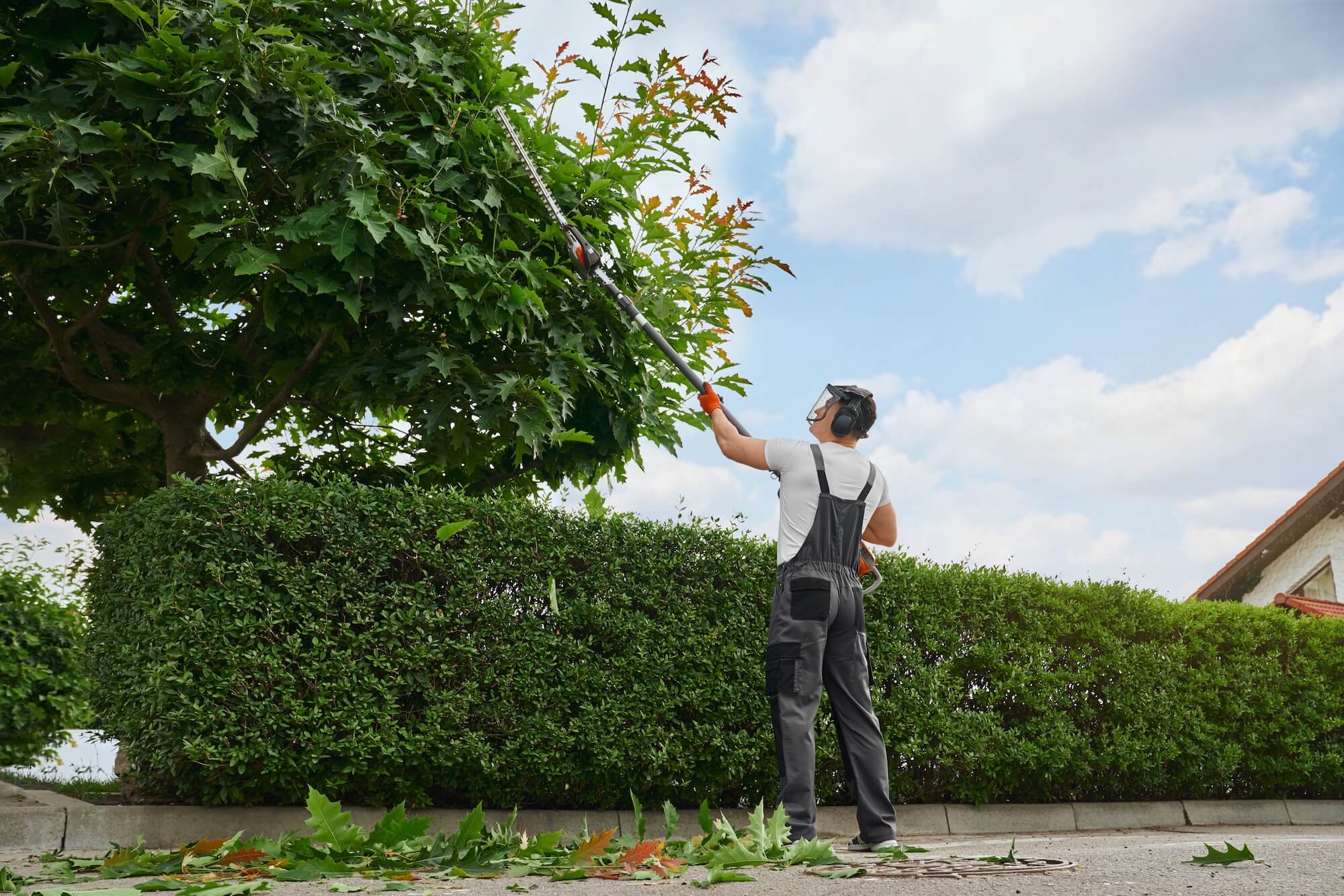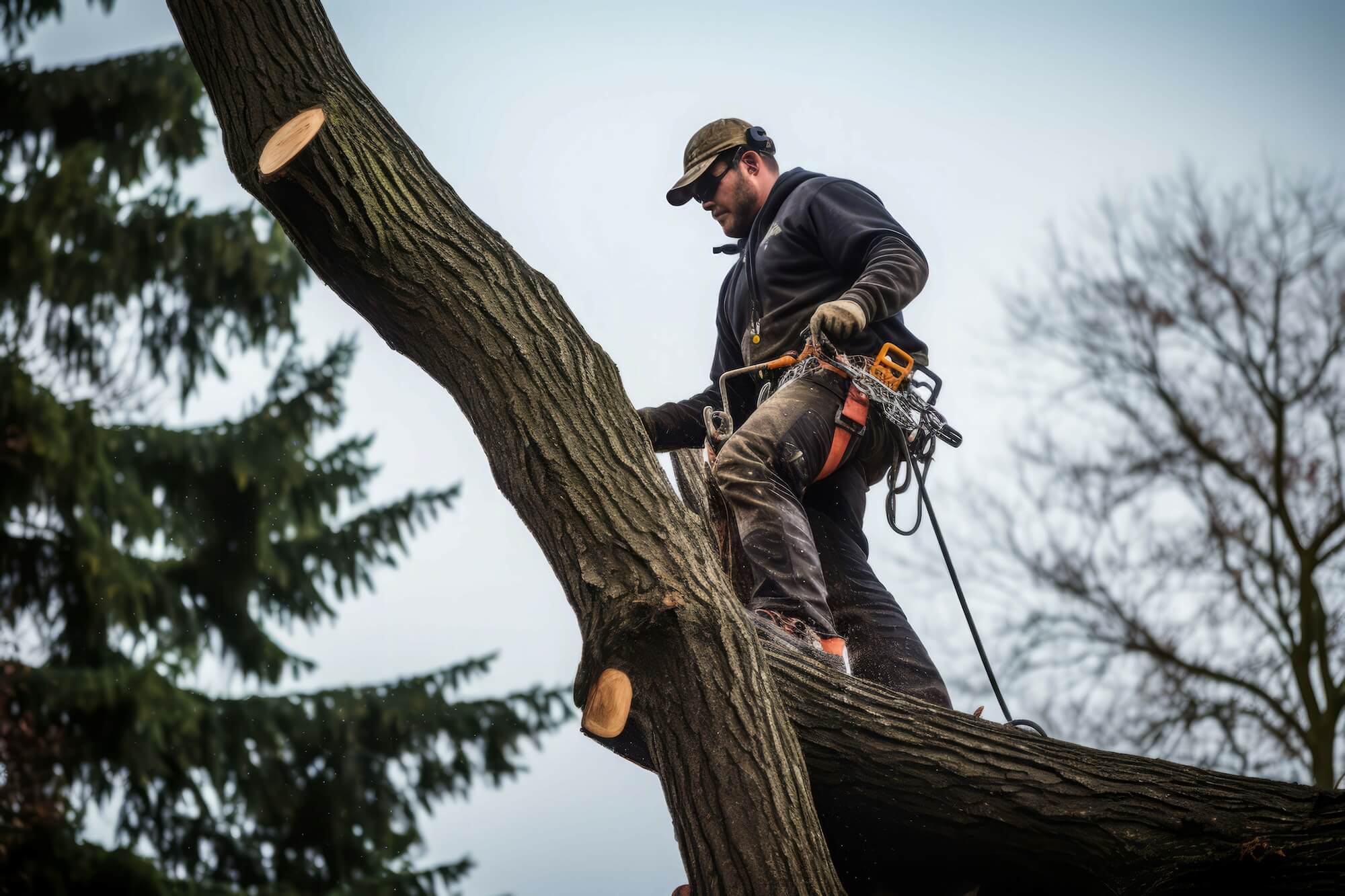How Ornamental Pruning Enhances Curb Appeal for Homeowners in Western Springs, IL

Why Ornamental Trees and Shrubs Matter
Picture walking through the neighborhoods of Western Springs, IL: winding sidewalks, historic homes, manicured lawns, and carefully chosen ornamental plants that add color, shape, and personality to each property. How Ornamental Pruning trees and shrubs are not just background greenery; they’re key elements that define the character of your home’s exterior. They can highlight architectural features, provide seasonal interest, and create a warm, welcoming atmosphere for visitors.
For homeowners, ornamental plants are often the “finishing touch” that sets their property apart. While large shade trees may offer grandeur and privacy, ornamentals bring detail and refinement. A gracefully shaped Japanese maple by the front porch, a flowering crabapple along the driveway, or a neatly pruned boxwood hedge can elevate your home’s curb appeal, making it stand out in a competitive market. In Western Springs—where pride of ownership is high—well-tended ornamentals convey care, taste, and a commitment to maintaining the neighborhood’s beauty.
But it’s not enough to simply plant ornamental trees and shrubs and hope for the best. Without proper pruning, these plants can become overgrown, misshapen, or less vibrant than intended. That’s where ornamental pruning comes in, transforming a basic landscape into something truly eye-catching.
Understanding Ornamental Pruning
Ornamental pruning is a specialized technique focused on shaping trees and shrubs for aesthetics, health, and long-term performance. Unlike general pruning, which may emphasize removing dead branches or preventing damage, ornamental pruning is about fine-tuning a plant’s appearance to bring out its best features—whether it’s the structure of its branches, the color of its blooms, or the texture of its foliage.
The Difference Between Ornamental and Routine Pruning
- Purpose and Detail:
Routine pruning might remove dead limbs or branches growing into power lines. Ornamental pruning, on the other hand, aims to enhance visual appeal. It’s more artistic, often involving strategic cuts that highlight certain branches, shapes, or forms. - Plant-Specific Techniques:
Different species respond uniquely to pruning. Ornamental pruning takes into account the plant’s natural growth pattern, bloom times, and growth rates. This requires more in-depth knowledge than standard pruning techniques. - Timing for Maximum Impact:
While routine pruning often happens during dormant seasons, ornamental pruning may occur before or after a blooming cycle to encourage more abundant flowers or maintain a specific shape throughout the growing season. - Attention to Long-Term Design:
Ornamental pruning is not a one-time fix. It’s part of a long-term approach to maintaining a plant’s form. Over years, careful pruning can create a mature specimen that looks intentional, balanced, and perfectly suited to its spot in the yard.
For homeowners in Western Springs, ornamental pruning represents an investment in curb appeal and landscape coherence. It’s about making sure that every plant contributes positively to the overall aesthetic and doesn’t become an overgrown distraction.
How Ornamental Pruning Boosts Curb Appeal
Curb appeal is that intangible quality that makes passersby say, “What a beautiful home!” It’s the feeling you get when a front yard feels harmonious, orderly, and thoughtfully designed. Ornamental trees and shrubs play a big role in creating that impression, and pruning them correctly can give your home a polished look.
Shaping Plants to Complement Home Architecture
One of the great advantages of ornamental pruning is the ability to shape plants in ways that highlight your home’s architecture. For instance:
- Accentuating Entryways:
A nicely pruned ornamental shrub flanking your front door can guide the eye and create a welcoming entry. Symmetrical pruning might work well for traditional homes, while more organic shapes suit cottage or craftsman styles. - Framing Windows:
Well-pruned ornamental trees placed near windows can frame your view from inside while presenting a delightful scene outside. With proper pruning, they won’t block light or views, but rather enhance them. - Highlighting Unique Features:
If your home has a distinctive architectural feature—like a bay window, a porch column, or a stone facade—ornamental pruning can ensure the surrounding greenery complements these elements rather than overshadowing them.
Encouraging Lush Blooms and Foliage
Many ornamental shrubs and trees are chosen for their seasonal color—vibrant spring blooms, vivid fall foliage, or interesting winter bark. Pruning at the right time can encourage more abundant blossoms and healthier, fuller foliage. For example:
- Timing Pruning for Flowering:
If you prune a spring-blooming ornamental right after its blooms fade, you enable it to set more buds for the next year. This results in a more spectacular show next season, impressing neighbors and potential buyers if you ever decide to sell. - Improving Airflow and Light Penetration:
Thinning out crowded branches allows more sunlight into the interior of the plant, promoting healthier growth and reducing the risk of disease. This translates into more vibrant leaves and a healthier plant overall, both of which contribute to better curb appeal.
Crafting Distinctive Shapes and Silhouettes
Ornamental pruning lets you sculpt a plant to emphasize its natural form—or even create a more stylized shape. Topiaries, for instance, are extreme examples of ornamental pruning, where shrubs are shaped into geometric forms or whimsical designs. While you may not want full-blown topiaries in your front yard, subtle shaping can do wonders:
- Creating Flow and Rhythm:
By pruning ornamentals to have complementary shapes and sizes, you help guide the viewer’s eye across your yard. A well-proportioned arrangement of shrubs and small trees can lead the gaze from the street to the front door, establishing a pleasing visual flow. - Building Layers and Depth:
Ornamental pruning can help create depth in your landscape design. Trimmed shrubs in front, medium-sized ornamentals in the middle, and taller trees in the background form layers that add complexity and interest to the scene.
Choosing the Right Ornamentals for Western Springs
Before you start pruning, it’s important to select the right ornamental plants for your yard. Western Springs has a climate with cold winters, warm summers, and fairly regular rainfall. Native species or those well-adapted to the region’s conditions will thrive and require less maintenance.
Ideal Ornamentals for the Local Climate
- Flowering Crabapple:
These small trees produce stunning spring blossoms and can be pruned to maintain a neat shape. They add seasonal interest and fit well into many yard sizes. - Japanese Maple:
Known for their delicate foliage and vibrant fall color, Japanese maples respond beautifully to ornamental pruning. They can become a focal point in a front yard, especially when carefully shaped. - Boxwood Shrubs:
Evergreen boxwoods are popular for hedges, foundation plantings, and topiaries. They’re hardy and forgiving, making them great candidates for ornamental shaping. - Hydrangeas:
With large, showy blooms and lush foliage, hydrangeas can be pruned to control their size and encourage bigger, more abundant flowers. - Magnolia Trees:
Magnolias offer spectacular spring blooms. With ornamental pruning, you can maintain a balanced canopy that highlights those gorgeous flowers.
Considerations When Selecting Ornamentals
- Mature Size:
Always envision the plant’s size at maturity. Pruning can somewhat control growth, but it’s best to choose a plant that naturally fits your yard’s scale. - Bloom Time:
Different ornamentals bloom at various times. Mixing early and late bloomers ensures there’s always something appealing to look at, but you’ll need to adjust your pruning schedule accordingly. - Maintenance Level:
Some ornamentals require more frequent pruning to keep them tidy, while others require relatively low maintenance. Consider how much time and effort you’re willing to invest.
Techniques for Effective Ornamental Pruning
Pruning isn’t just about cutting branches; it’s a skill that requires understanding plant biology, aesthetics, and timing. When done correctly, pruning can be as much an art as it is a science.
Basic Pruning Principles
- Use Sharp, Clean Tools:
Dull or dirty tools make ragged cuts that can invite disease. Sharp pruning shears or saws ensure clean cuts and a healthy healing process. - Remove Dead and Diseased Wood First:
Start by removing any dead, damaged, or diseased branches. This immediately improves the plant’s health and reveals its natural shape. - Focus on Shape and Structure:
Step back periodically to assess your progress. Make cuts that enhance the plant’s natural form. If a branch is crossing or rubbing another, removing it can prevent future damage. - Cut at the Right Angle and Location:
Always cut just above a bud that faces the direction you want new growth to follow. This encourages the plant to grow in a particular pattern and maintains a tidy appearance.
Timing Your Cuts
The right time to prune depends on the species and what you hope to achieve:
- Spring-Flowering Ornamentals:
Prune immediately after they finish blooming. This allows the plant to set new buds for the next year. - Summer-Blooming Ornamentals:
Prune in late winter or early spring before new growth begins, encouraging a fuller bloom come summer. - Evergreen Shrubs:
Light pruning can be done almost any time, but late spring or early summer is often ideal to maintain shape without stressing the plant.
Specialized Techniques
- Crown Thinning:
Select branches can be removed to let light and air penetrate the canopy, improving plant health and revealing the plant’s graceful branching pattern. - Crown Reduction:
Shortening the overall height or spread of a plant without topping it. This keeps the plant’s natural shape while controlling its size. - Crown Raising:
Removing lower branches to create clearance—useful for trees near walkways or driveways to improve visibility and safety. - Topiary and Espalier:
More advanced forms of ornamental pruning that shape plants into formal patterns, geometric shapes, or trained forms along walls or fences.
Professional vs. DIY Pruning
Many homeowners take pride in maintaining their yards themselves. However, ornamental pruning requires a certain level of expertise, especially if you want to achieve the best curb appeal possible.
When to Do It Yourself
DIY maintenance is doable if you have a small number of ornamentals and you’re confident in your pruning knowledge. Start with a modest approach:
- Begin with Simple Shrubs:
Lightly shaping boxwoods or removing dead blooms from hydrangeas is a good way to gain confidence. - Learn from Resources:
Numerous guides, videos, and classes can teach you basic pruning skills. Start small and work your way up as you gain experience. - Watch the Calendar:
Make sure you’re pruning at the right time of year based on your plant species.
When to Hire a Pro
For more complex tasks, consider hiring a professional arborist or landscape company:
- Multiple Ornamentals or Complex Designs:
If you have a variety of ornamentals with different bloom times and shapes, a professional can coordinate the pruning schedule to maximize their impact. - High-Value Specimens:
If you have a rare or expensive ornamental tree that’s crucial to your yard’s appeal, entrusting it to a professional ensures it’s pruned correctly, enhancing its longevity and appearance. - Time Constraints:
If you’re too busy to keep up with seasonal pruning, a pro can handle it all, so you always enjoy a well-groomed landscape. - Difficult Access or Safety Concerns:
If a plant is large, near power lines, or requires climbing, a professional has the equipment and training to do the job safely.
Integrating Ornamental Pruning into Your Overall Landscape Plan
Ornamental pruning isn’t a standalone activity. To get the most from it, consider it part of a broader landscaping strategy that includes plant selection, soil care, irrigation, and seasonal cleanup.
Supporting Plant Health and Vigor
Pruning alone isn’t enough to keep ornamentals thriving. Healthy, well-fed plants respond better to pruning and recover faster. Consider complementary actions:
- Fertilize Appropriately:
Use a balanced, slow-release fertilizer to ensure your ornamentals get nutrients. Avoid over-fertilizing, which can lead to weak, overly lush growth that’s hard to maintain. - Adequate Watering:
Water deeply and consistently, especially during dry spells. Stressed plants are less responsive to pruning and may produce fewer blooms. - Pest and Disease Management:
Keep an eye out for pests or diseases. Early detection makes it easier to address these issues before they affect your ornamental’s appearance.
Coordinating with Other Landscape Features
Ornamental pruning also fits into a larger design context:
- Balancing Hardscapes and Softscapes:
If you have walkways, fences, or garden art, pruning ornamentals can ensure these features remain visible and aesthetically pleasing. - Seasonal Interest:
Plan your ornamental pruning schedule around blooming periods, autumn foliage displays, or winter bark interest. Consistent care ensures there’s always something appealing to look at. - Harmonizing with Neighbors’ Yards:
Western Springs prides itself on a unified, attractive neighborhood appearance. Well-pruned ornamentals that complement your neighbors’ landscapes can enhance the entire block’s curb appeal.
Environmental and Community Benefits
Beyond personal gain, ornamental pruning contributes to the broader community and environment:
Supporting Local Wildlife
Ornamentals can provide habitats for birds, butterflies, and beneficial insects. By pruning carefully, you maintain these habitats while ensuring the plant’s health. For example, trimming dead wood while leaving some dense foliage can create nesting spots or shelter.
Maintaining Western Springs’ Green Character
Individual yards add up. When multiple homeowners invest in proper ornamental pruning, the cumulative effect is a community that looks and feels cared for. This collective effort supports property values, fosters neighborhood pride, and maintains Western Springs’ reputation as a desirable place to live.
Avoiding Common Pruning Mistakes
While the benefits of ornamental pruning are clear, it’s also easy to make mistakes if you’re new to the process. Some pitfalls to avoid:
- Topping Trees:
Cutting the top off a tree to reduce height is a big no-no. It leads to weak regrowth and an unsightly shape, diminishing curb appeal. - Over-Pruning:
Removing too much foliage at once can stress the plant. Aim to remove no more than 10-20% of the canopy in one pruning session. - Incorrect Timing:
Pruning at the wrong time can cut off next year’s blooms or stress the plant. Always learn the specific needs of your ornamental species. - Ignoring the Plant’s Natural Shape:
Ornamentals have innate growth patterns. Working with these patterns rather than against them yields the best results.
Long-Term Benefits of Consistent Ornamental Pruning
One of the greatest advantages of ornamental pruning is how it builds value over time. Each year, as you prune thoughtfully, your ornamentals become more refined, resilient, and beautiful. A well-pruned ornamental can serve as a signature feature of your front yard, impressing guests and potential buyers alike.
Enhancing Your Home’s Marketability
If you ever decide to sell your home, curb appeal matters. A landscape with tastefully pruned ornamentals suggests that the property is well-maintained. This can influence a buyer’s first impression and, ultimately, their willingness to make a strong offer.
Personal Enjoyment and Pride
Even if you’re not planning to move, the satisfaction of looking out your window at a perfectly shaped ornamental tree or enjoying the fragrance of a well-pruned flowering shrub is its own reward. Your yard becomes a personal retreat, a place where you can relax and recharge amid beautiful surroundings.
Making the Most of Professional Help
If you decide to hire professional arborists or landscaping services, view it as a partnership. Communicate your goals—do you want a more formal look or a natural, flowing shape? Which plants are your favorites, and what kind of blooms or foliage are you most excited about? The more they understand your vision, the better they can deliver results that align with your aesthetic and functional needs.
Evaluating the Pros
When looking for a professional to handle ornamental pruning:
- Check References and Certifications:
Ensure they have experience with ornamental pruning, not just general tree care. - Ask About Their Approach:
The best professionals will explain their techniques, timing, and how they aim to enhance your property’s curb appeal. - Discuss Long-Term Plans:
Consider ongoing maintenance schedules to keep your ornamentals looking their best through every season.
Conclusion: A Lasting Impression on Every Passerby
In a community like Western Springs, where each home contributes to the neighborhood’s overall charm, ornamental pruning stands out as a powerful tool for homeowners. It transforms ordinary yards into living art galleries, where each tree and shrub is carefully shaped to complement the house, reflect personal style, and celebrate the seasons.
By choosing the right ornamentals, pruning them thoughtfully, and integrating this practice into your broader landscaping strategy, you reap the rewards: enhanced curb appeal, healthier plants, and a yard that brings daily joy. Whether you do it yourself or hire a skilled professional, ornamental pruning is an investment that pays dividends year after year. With patience, knowledge, and creativity, you can ensure that every visitor, neighbor, and passerby sees your home at its absolute best—framed by a landscape that truly shines.
Ready to get started? Contact us today for a free quote and consultation.




